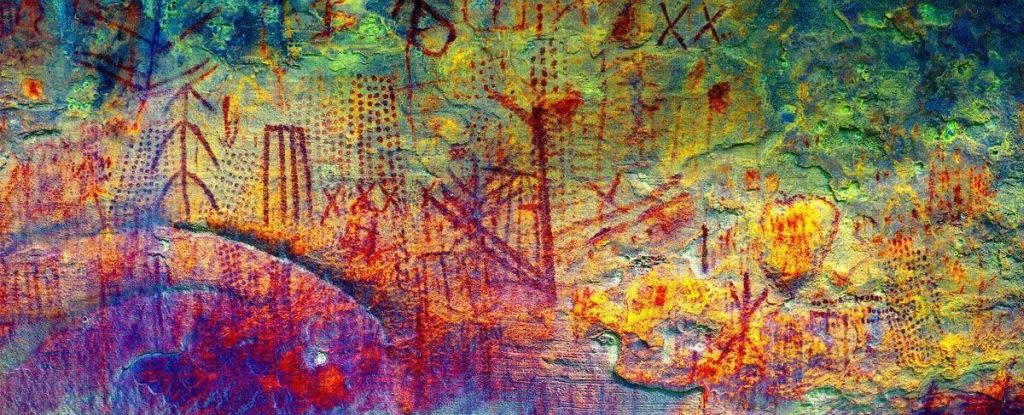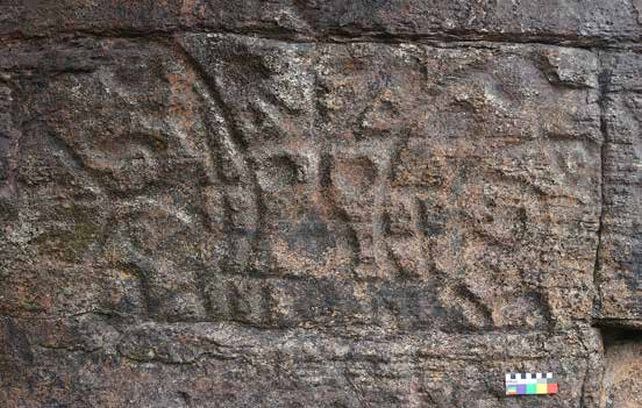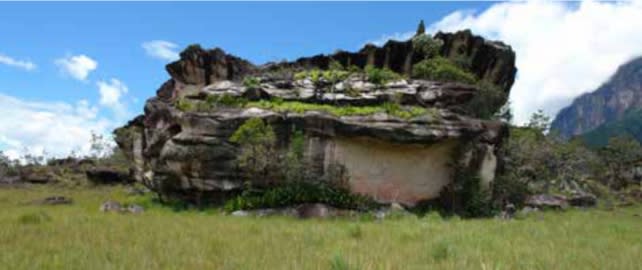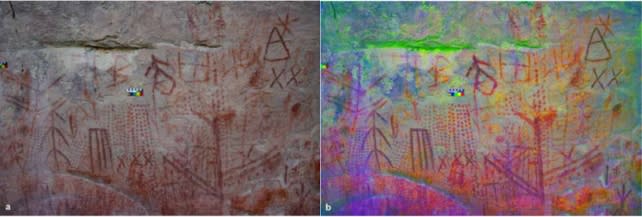Mysterious Symbols on 4,000-Year-Old Rock Art Hint at an Unknown Culture

Hidden deep in the highlands of southern Venezuela, archaeologists have uncovered one of humanity's best-kept secrets.
At around 20 different sites, carved and painted in caves and on boulders, archaeologists have discovered glyphs, pictograms, and other symbols, left behind thousands of years ago.
It's the first rock art of any kind discovered in southern Venezuela, and while there are similarities to rock art in Brazil, it's unclear whose hands left behind the mysterious motifs.
The findings to date have been presented at the UNESCO-supported New Worlds New Ideas conference in Italy.
The Canaima National Park in the Guiana Highlands of Venezuela is a spectacular part of the world. There, flat-topped mountains called tepuis tower over forests and savannas, forming a landscape that inspires awe and wonder.
But, although ancient rock art that pays homage to the land can be found in neighboring Guyana, Brazil, and Suriname, Venezuela has seemed curiously bare.

Just because we don't know about something, though, that doesn't mean it doesn't exist, as discovered by archaeologist José Miguel Pérez-Gómez of Simon Bolivar University and his colleague Roger Swidorowicz.
While investigating rock art in the region known as the Guiana Shield Complex, Pérez-Gómez collaborated with the local Kamaracoto people to identify several sites containing pictograms and petroglyphs previously unreported in scientific literature. Attempts to locate the traditional custodians of the sites have been unsuccessful, with the Kamaracoto denying cultural association.
These sites are yet to be dated, so we have no idea when the rocks were decorated, but similar rock art found in other regions, such as Brazil, Colombia, and Guyana, suggests that it's at least 4,000 years old. In fact, other sites in Brazil have art that exceeds 10,000 years in age.
We know from these other sites that many of the symbols inscribed at the new locations probably have ritualistic meanings. It's not clear what those meanings are; and it's possible that we'll never know, since there is no one around to tell us.

"For archaeologists, it's very difficult to get into the mind of people that lived 4,000 years ago," Pérez-Gómez told New Scientist.
But the spectacular locations seem important. "For these people, these places meant something. It helped them to explain their reality, and their connection with the landscape. It was a portal for them to connect with the supernatural worlds, connecting, perhaps, to other people and their loved ones."
One particular boulder was the main subject of a paper authored by the researchers. It's clustered with shapes daubed in red ochre, likely dug out from a rock nearby. Dots, feather shapes, key shapes, roof-like shapes, and Y-shaped symbols cover different panels on the boulder, sometimes painted over each other.

This boulder appears to have been important, in an elevated position that allows good visibility for the surrounding landscape, and with an overhang under which people seem to have sheltered.
"The geographical survey shows that this boulder with its pictograms stands in the middle of an awe-inspiring landscape," the researchers write.
"It must have served as a geographical reference point to those approaching from multiple directions. The boulder's morphology provides an area large enough to be used as a shelter, perhaps for a group of 15 to 20 individuals. The presence of walls and a ceiling blackened by fire serve to confirm its use for temporary habitation."

This painstaking work has already taken several years. It's possible that more sites may be lurking in the Venezuelan forest. The researchers hope to conduct more expeditions to the sites, to document them in greater detail, discover any other sites that may be lurking in the wilderness, and work to protect them.
"This is the first time these pictograms have been preliminarily researched and contextualized in this remote place," they write in their paper.
"Our initial results indicate that we stand before a relevant archaeological site. As a result, we underline not only the need to continue research there but also to continue exploring for similar rock art sites in the geographical context."
A 2023 paper documenting some of the discoveries was published in Rock Art Research, and Pérez-Gómez presented them at New World New Ideas in June 2024.

